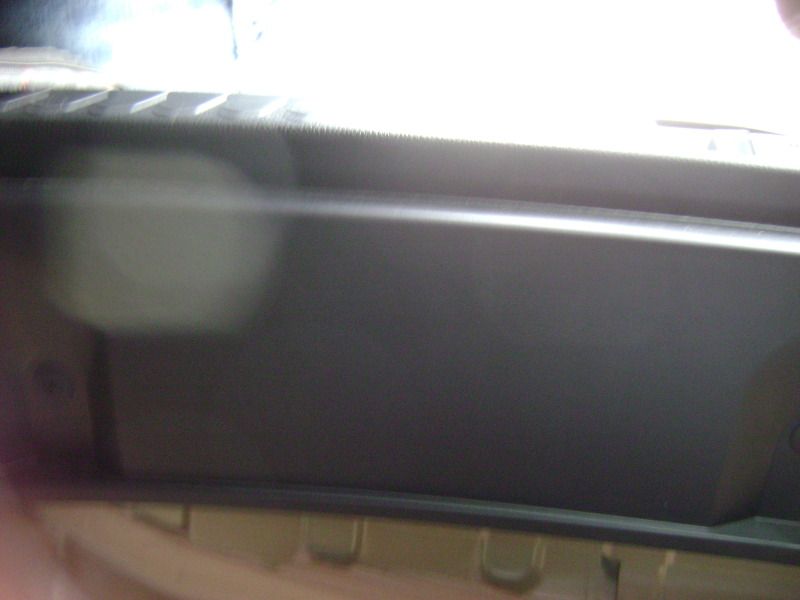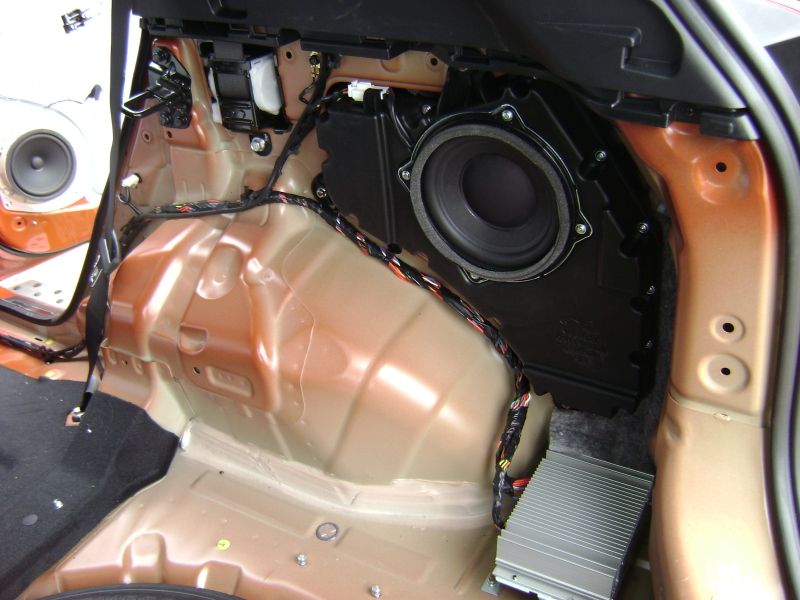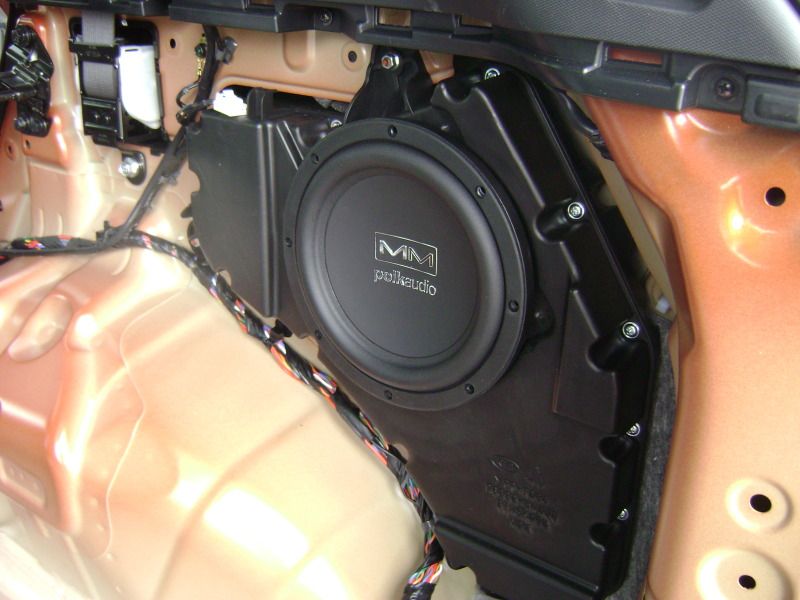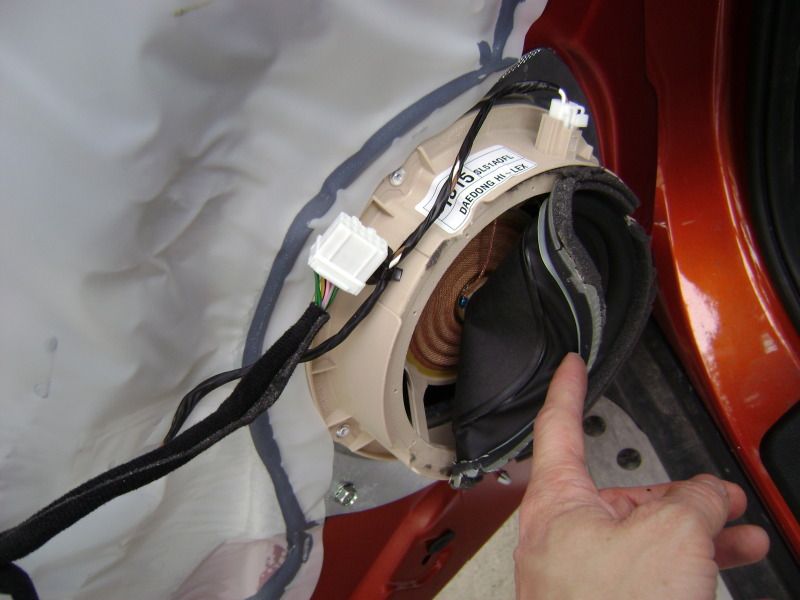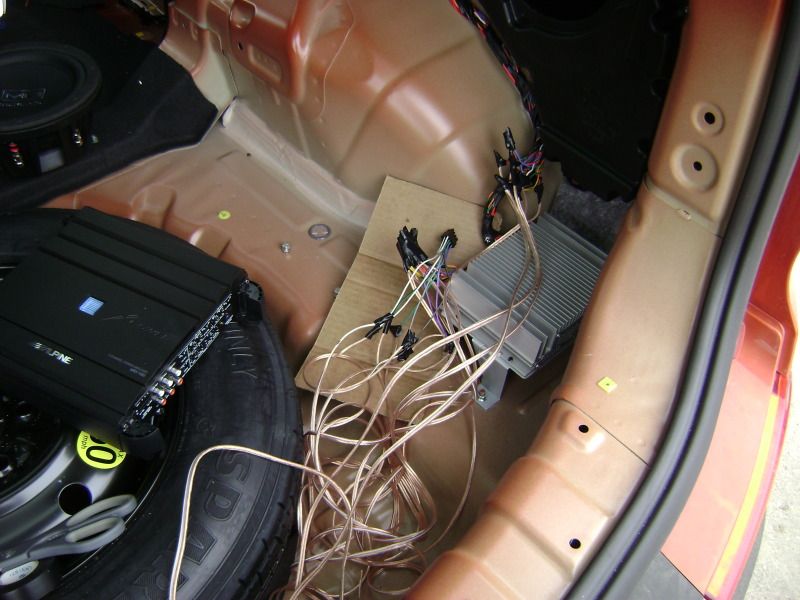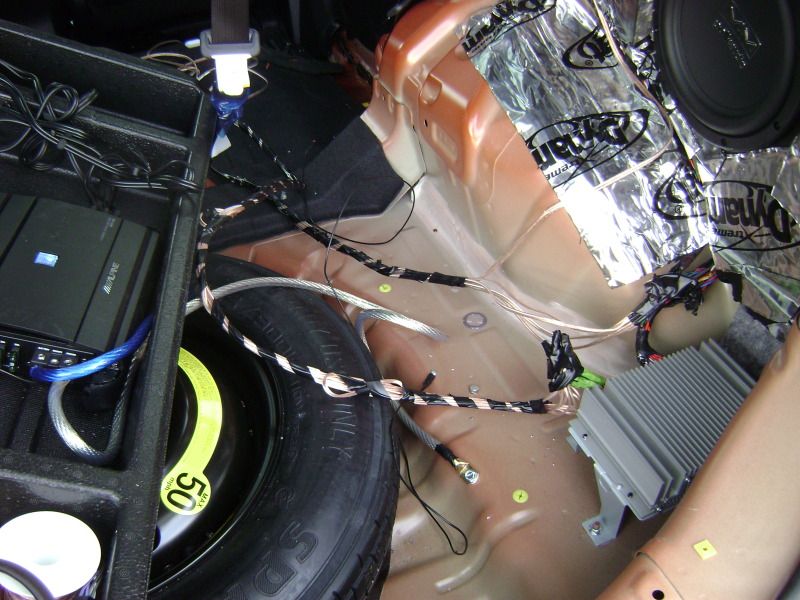Amplifier installation
Tools required:
Crimper/wire stripper
Solder (option 1)
Butt connectors (option 2)
18 gauge speaker wire
Line out converter (Cache COE6 or Audiocontrol LC6i work well)
This part of the installation was a bit sketchy. Wire diagrams didn’t match up perfectly for some reason, so I used the test as you go type method since I had the amp already pre-wired. First I cut all the wires at the 12 wire connector on the amplifier. I added sufficient lengths of speaker wire to both the wires now coming out of the 12 wire connector to the amp, and also to the wires that were now cut from the amp (leading to the speakers). I soldered and electrical taped all my connections to ensure they would never disconnect. Butt connectors are another option here, and probably quicker too lol, but I don’t trust them completely. Although the wiring shown was my initial setup and was later changed the basic idea can be seen here:
And then the final wiring with all wires wrapped together neatly:
![Image]()
Off the amp and on the speaker end, the two corresponding positive and negative wires have been twisted together. You can find wiring diagrams online, but I still think mine weren’t correct. To wire, wired up all my speakers to the amp and tested each set of wires coming off the amp to determine which wires were left and right, and which carried which frequencies. I used a track that had different guitar parts coming out of the left and right speakers to help with this. Once I had the amp wires figured out I wired all the treble to input 1 on my line out converter, the mids to input 2 and the lows to input 3. I used the summing feature and set the jumpers inside the line out converter to sum all channels. Wire up your line out converter to your amp with RCA’s. From that point I set the fader on the stereo to each channel individually (front left, front right, etc) to have my channels correspond to how I wanted them on my amplifier. It was literally a guess and test procedure. After this, the amp and line out converter are done. I cut a hole in the Styrofoam tray to run the wires to my amp and LOC. I used Velcro to hold down the amp and LOC, no issues so far, they seem very solid. Although I have cleaned it up further, here is the initial picture of the “final” installation.
![Image]()
I think that pretty much covers everything. I may have left some stuff out, but I’m sure you guys will ask.



















